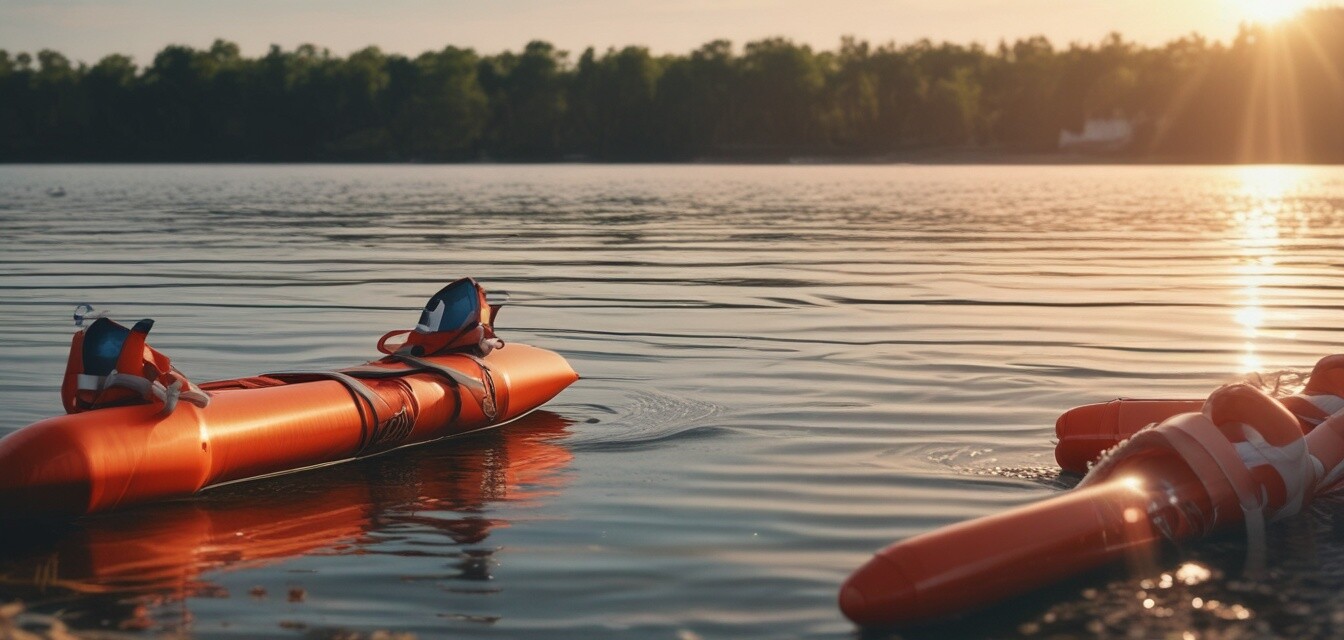
Some links on this website are affiliate links. If you make a purchase through these links, we may earn a commission or you may receive a discount, at no additional cost to you. This helps support our site.
Please also note that Artificial Intelligence (AI) may have been used in the research, content generation, and design of this website. Our aim is to enhance your experience, and we strive for accuracy and transparency in all information presented.
How to Teach Kids Water Safety at the Lake
Key Takeaways
- Always supervise children around water.
- Teach kids to wear life jackets at all times.
- Explain the dangers of swimming in unknown areas.
- Conduct water safety drills and practices.
- Foster open communication about water safety rules.
Water activities at the lake can be exciting and fun, especially for children, but ensuring their safety is a top priority. By instilling knowledge about water safety, you equip kids with the skills they need to enjoy their time at the lake while minimizing risks. This article provides practical tips on how to teach your children essential water safety rules while enjoying your lake adventures.
The importance of water safety for kids
Water safety is crucial, especially for children, who may not fully understand the potential dangers of water activities. Drowning is a leading cause of accidental death among children. In the context of lake adventures, where the environment can change rapidly due to currents and other factors, teaching kids how to stay safe is essential.
Basic water safety rules to teach
| Rule | Explanation |
|---|---|
| Always wear a life jacket | Life jackets can keep kids afloat and reduce the risk of drowning. |
| Stay close to adults | Supervision is key. Children should always be within an adult's sight and reach. |
| Don’t swim alone | Swimming with a buddy reduces risks and ensures help is available if needed. |
| Avoid diving in unclear waters | Unfamiliar depths and unseen obstacles can lead to serious injuries. |
Engaging children with water safety tips
Children learn better when they are engaged and interested. Here are some fun ways to help them understand the rules of water safety:
- Interactive games: Create games that incorporate water safety rules, like simulating rescue scenarios or practicing safe swimming techniques.
- Storytime: Use books or storytelling that emphasize the importance of water safety. This can help kids relate to characters and situations.
- Hands-on practice: Have kids practice putting on life vests, swimming with a buddy, or calling for help in a controlled environment.
Creating a safety checklist for lake outings
Before heading out to a lake, prepare a safety checklist with your children. This encourages them to take an active role in their safety. Here’s a simple checklist to start with:
- Pack life jackets for everyone.
- Bring a first-aid kit.
- Ensure someone knows CPR.
- Identify a designated adult supervisor for the day.
- Check weather conditions before leaving home.
Practicing safety drills
Conducting water safety drills is a practical way to reinforce rules and guidelines. Simulate different scenarios, such as:
- How to signal for help.
- What to do if you see someone in trouble.
- How to escape from a dangerous situation (like a strong current).
Practicing these scenarios in a safe and controlled setting will prepare them for real-life situations.
Communication is key
Encouraging an open dialogue about water safety is vital. Ask your kids how they feel about swimming, what they enjoy or fear, and listen to their concerns. When they feel heard, they are more likely to engage in safety practices and follow the rules. Regularly reviewing rules and discussing their experiences at the lake will help reinforce their importance.
Setting a good example
Kids often model their behavior after adults. By demonstrating proper safety practices like wearing life jackets, respecting swimming areas, and following safety protocols, you can influence your children's behavior positively. Lead by example, and they will more likely mirror these actions.
Tips for a safe and enjoyable lake adventure
- Choose a safe swimming area and remain within designated zones.
- Be mindful of weather conditions and adjust plans accordingly.
- Have fun water toys but ensure they are appropriate for your child's age.
- Keep the focus on having fun while practicing safety rules together.
Conclusion
Teaching kids about water safety at the lake is vital in ensuring their enjoyment and safety during your adventures. By laying down fundamental rules, practicing drills, and engaging in open communication, you empower them to make wise choices around water. Safety at the lake is not just about caution; it’s about building the skills and knowledge needed for a fun, unforgettable experience. For more tips on enhancing your lake adventures, check out our section on tips and tricks.
Pros
- Increases children's confidence in and around water.
- Fosters a culture of safety during lake outings.
- Creates engaging family bonding moments.
Cons
- May require time and repetition to instill habits.
- Some children may resist safety rules initially.
